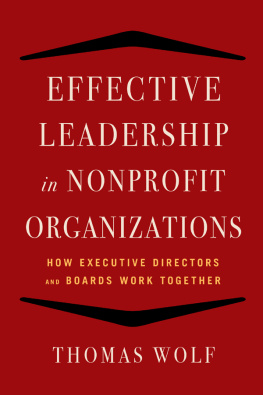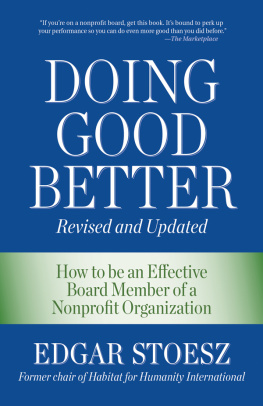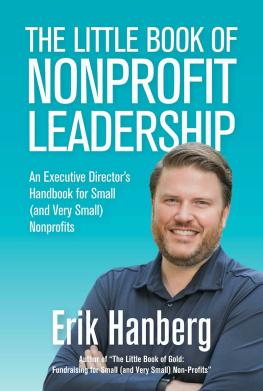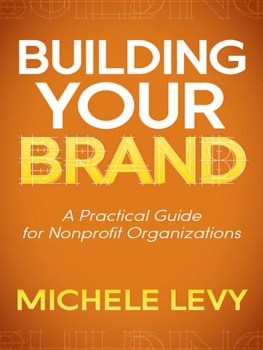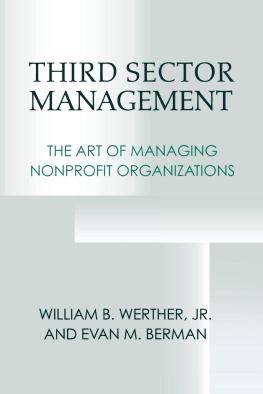
Copyright 2013 by Thomas Wolf
All Rights Reserved. Copyright under Berne Copyright Convention, Universal Copyright Convention, and Pan American Copyright Convention. No part of this book may be reproduced, stored in a retrieval system, or transmitted in any form, or by any means, electronic, mechanical, photocopying, recording or otherwise, without the express written consent of the publisher, except in the case of brief excerpts in critical reviews or articles. All inquiries should be addressed to Allworth Press, 307 West 36th Street, 11th Floor, New York, NY 10018.
Allworth Press books may be purchased in bulk at special discounts for sales promotion, corporate gifts, fundraising, or educational purposes. Special editions can also be created to specifications. For details, contact the Special Sales Department, Allworth Press, 307 West 36th Street, 11th Floor, New York, NY 10018 or info@skyhorsepublishing.com .
17 16 15 14 13 5 4 3 2 1
eISBN: 978-1-62873-885-8
Published by Allworth Press, an imprint of Skyhorse Publishing, Inc. 307 West 36th Street, 11th Floor, New York, NY 10018.
Allworth Press is a registered trademark of Skyhorse Publishing, Inc., a Delaware corporation.
www.allworth.com
Cover and interior design by Mary Belibasakis
Page composition/typography by SR Desktop Services, Ridge, NY
Library of Congress Cataloging-in-Publication Data is available on file
ISBN: 978-1-62153-287-3
Printed in the United States of America
To Dennie
And to Five Decades of Working Together
TABLE OF CONTENTS
PREFACE
Background
Many years ago, after finishing graduate school, I took on my first major work assignment as the executive director of a nonprofit organization . I was very excited. It was my first full-time job, I had won it over several much more experienced candidates, and I felt I was being provided with a career-boosting opportunity.
It wasnt that I lacked nonprofit work experience. I had spent several years working off and on for a nonprofit organization directed by my uncle. It was that experience, my uncles connections, plus my newly minted doctorate that landed me the job. But I had been doing primarily administrative tasks for my uncles organization, and though they carried a lot of responsibility, I had never even met his board of trustees. Now, I was going to have to work with a board. I figured I better learn what that was all about. So, I did what many others have done in a similar situation. I signed up for a workshop that promised to teach me what I needed to know about nonprofit boards.
There I was, bright-eyed and energetic, wanting to learn exactly what a board was supposed to do and how it related to my job. I had heard a lot of words associated with boards that I didnt really understand (onefiduciaryI even had to look up in the dictionary ). As to the more familiar-sounding words like governance and trusteeship, I didnt really know what they meant in the context of my new organization.
Frankly, I was confused. Some of my friends treated me as though this was going to be my organizationI would be the boss. After all, as executive director, I was the head of the organization, they explained. More experienced acquaintances kept asking me about the trustees: what did I know about them and the effectiveness of the board as a whole? Had I spent much time with any of them? Were they philanthropic and good at fundraising?
The answer was, I didnt know. I had met some board members over the course of three formal interviews, but I wasnt acquainted with the others. My friends told me I had better find out because my success would depend, at least in part, on the answer.
I knew the president and liked him. He and I had had an in-depth conversation when I was offered the job. We had haggled some about my salary and benefits, and we had hashed out an agreement fairly quickly. After all, I wanted the job. He said he was acting on behalf and with the authority of the full board. Clearly, if the board had the authority to hire me and set my salary and benefits, they had a lot of power. He also explainedthough he said he was sure it would never become an issuethat the board had the legal authority to fire me, and he suggested I read the personnel manual carefully. This was good advice, as it was certainly important for me to get to the bottom of what the relationship was all about.
The workshop was my chance to learn. By the end of the morning , I had gained quite a bit of insight about the kind of organization I was joining. It was called a nonprofit, not because it couldnt make moneyin fact, successful ones did. The point was that unlike a for-profit company, where owners or shareholders could reap a personal profit when the organization made money, there was no such possibility in a nonprofit. No one could personally lay claim on any of the funds that the organization brought in, except, of course, for the staff whose salaries were already set for the work they were to do or for those providing direct services or products in some other way. No one owned any part of a nonprofit organization. No one could make money by selling off the assets. If one reason to be a board member in a for-profit was to enrich oneself as an owner or shareholder (which board members often were), no such incentive existed in the nonprofit world.
So, if personal enrichment wasnt the goal, what was? If the bottom line wasnt profit, what was it? In fact, it was something elusive called public service. Any dollars taken in were to be allocated to activities serving the mission of the organization (and the associated costs of realizing that mission). If the money were not spent right away, it had to be put away in a reserve fund or an endowment fund to be used later for the public purpose (or provided to another charity).
What was the role of trustees in this kind of structure? Nonprofit trustees had obligations that were, first and foremost, legal ones. Federal, state, and local governments had granted various benefits and immunities to nonprofits (like tax deductibility of gifts, exemption from property taxes, and so on) and they needed to be sure that these organizations adhered to their public purpose and the law. These governments could not police every activity and expenditure in the millions of nonprofits that exist. Rather, they empowered groups of trustees to do this for them. The trustees were accountable for making sure that the public was being served and that the relevant laws were being followed and monies were being spent appropriately. Indeed, they were legally accountable, and in some cases, could be sued for not doing so. For this reason, trustees were given ultimate authority over everythingfinances, policies, even the hiring and firing of the executive director.
By the time lunch was served, the job was not looking so attractive. The trustees were all-powerful. This hardly sounded like the role I had coveted.
But after lunch, the picture got a little brighter. I learned that although the board of a nonprofit organization has legal and fiduciary (financial) oversight responsibility, it often delegates a huge amount of this job to a chief executive who serves like the captain of a ship. Once the ship sets sail, the captain takes over, handling day-to-day details. He or she hires the crew (staff), designs the activities (programs), manages the day-to-day finances, and makes sure everything runs properly. The trustees stay ashore, so to speak, entrusting things to the captain. As long as the captain keeps the ship on course and off the rocks and carries cargo and passengers where they are supposed to go, there is no reason for the board to meddle in day-to-day matters. In fact, I learned in a properly governed organization, the boards job was to deal with legal issues, handle policy matters, provide financial oversight, hire the executive director, and most importantly, raise money. So long as the executive director was doing a good job in hiring staff and managing the affairs of the corporation and the board raised enough money, everyone should get along splendidly.
Next page
